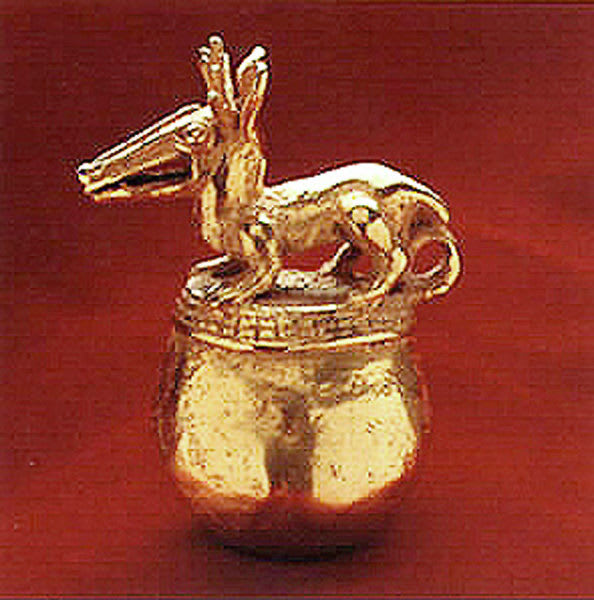Gold Bell Pendant Featuring a Composite Creature, 500 CE - 1550 CE
Gold
1.875
FJ.6157
Art and religion, when blended with talent and ardent faith, becomes a very potent mixture. The ancient Costa Ricans understood the principal of transformation, in that an element such as...
Art and religion, when blended with talent and ardent faith, becomes a very potent mixture. The ancient Costa Ricans understood the principal of transformation, in that an element such as gold, can be elevated beyond its own intrinsic worth through the skills and singleness of purpose of a master artist. Gold in its raw state was not highly prized by the Costa Ricans. It was found in great abundance in streams, particularly in the Diquis region, and only after it had undergone a metamorphosis into a work of art did it acquire significance. This very charming bell pendant is surmounded by a curious creature that seems a cross between tapir and crocodile. Animal iconography was restricted to certain types, namely animals that were not part of the major food groups. This interesting fact suggests that such mysterious imagery may have had a very definite meaning in Costa Rican mythology. The person who originally bought it or had it made was undoubtedly a wealthy individual who could afford the skilled labor required, and perhaps requested this particular zoomorphic representation. However, it is not necessary to know its esoteric meaning to enjoy its beauty; it is a work of art and as such stands by itself-unique, gracefully elegant and always enchanting.
Literature
V21
